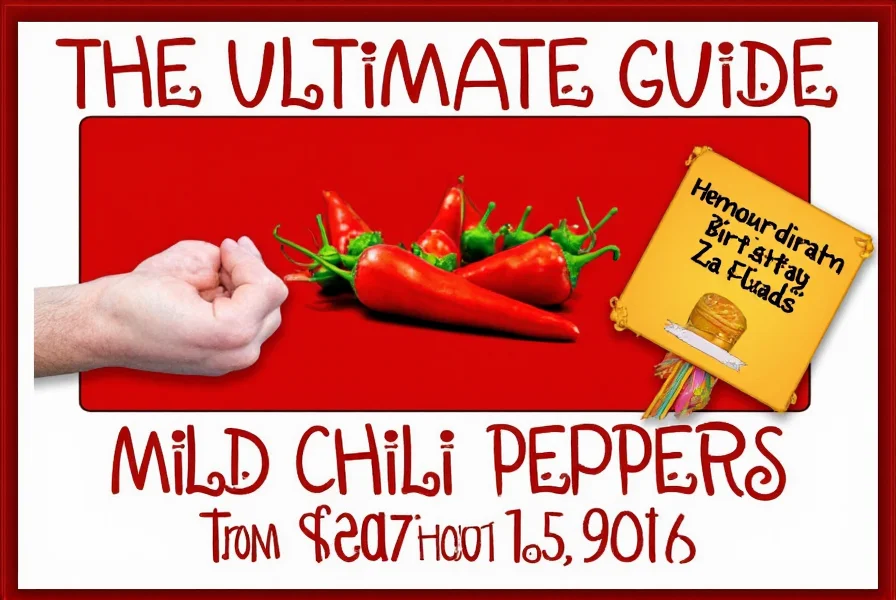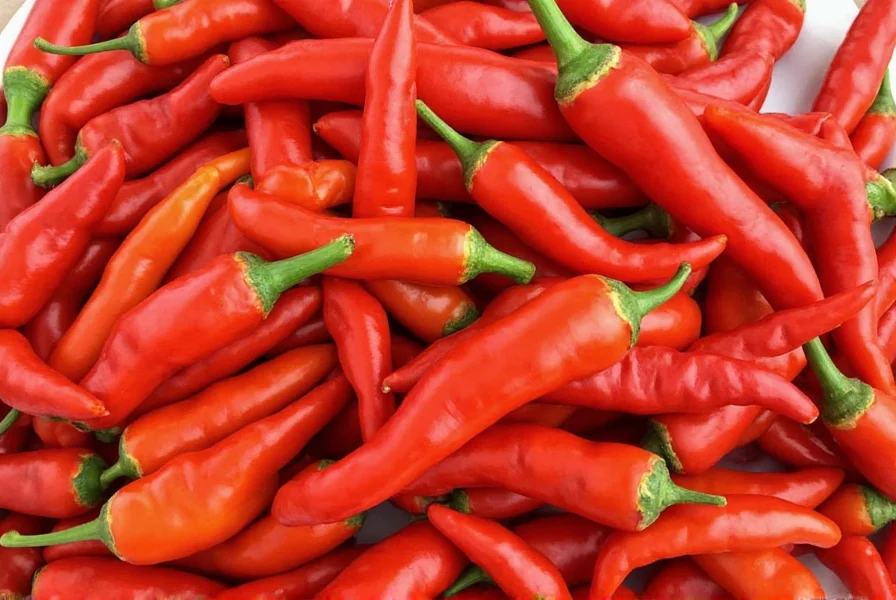- Introduction: What is a Calabrian Chili?
- How Spicy Is a Calabrian Chili?
- Calabrian vs. Other Chilis: A Spiciness Comparison
- Cooking with Calabrian Chilies: Tips and Tricks
- Buying Guide: How to Choose the Best Calabrian Chilies
- Frequently Asked Questions About Calabrian Chili Spiciness
- Conclusion: Embrace the Heat, Savor the Flavor
Yes, Calabrian chilies are spicy, with a Scoville Heat Unit (SHU) range of 25,000 to 45,000, placing them between jalapeños and habaneros in heat level. But they're not just about heat—they bring smoky, slightly sweet flavors that make them a staple in Italian cuisine.
How Spicy Is a Calabrian Chili?
When it comes to spiciness, the Scoville Heat Unit (SHU) scale is the gold standard. The Calabrian chili typically ranges from 25,000 to 45,000 SHU, which places it on the higher end of the mild to medium heat spectrum. To put that into perspective:
- Mild chilies: Bell peppers (0 SHU), Poblano (1,000–2,000 SHU)
- Medium chilies: Jalapeño (2,500–8,000 SHU), Serrano (10,000–23,000 SHU)
- Hot chilies: Habanero (100,000–350,000 SHU), Ghost Pepper (1,000,000+ SHU)

So, while the Calabrian chili isn't as fiery as a ghost pepper or habanero, it's definitely more than just a little kick. It's perfect for those who want a bit of heat without overwhelming their palate.
Calabrian vs. Other Chilis: A Spiciness Comparison
| Chili Type | Heat Level (SHU) | Flavor Profile |
|---|---|---|
| Calabrian Chili | 25,000 – 45,000 | Smoky, slightly sweet, with a tangy finish |
| Jalapeño | 2,500 – 8,000 | Grassy, slightly bitter, fresh |
| Serrano | 10,000 – 23,000 | Sharp, citrusy, more intense than jalapeños |
| Tabasco | 30,000 – 50,000 | Tangy, garlicky, with a vinegar bite |
| Habanero | 100,000 – 350,000 | Floral, fruity, extremely hot |

As you can see, the Calabrian chili falls between the Serrano and Tabasco in terms of heat. However, its flavor profile sets it apart—it's not just about the burn; it's about the complexity and richness it adds to food.
Cooking with Calabrian Chilies: Tips and Tricks
If you're wondering how to handle Calabrian chilies in your cooking, here are some practical tips to help you make the most of this fiery favorite:
- Use it raw: Fresh Calabrian chilies can be sliced and added to salads, bruschetta, or even pizza for a burst of flavor and heat.
- Cook it down: Dried Calabrian chilies are often used in sauces, stews, and marinades. They soften and develop a deeper, smokier flavor when cooked.
- Make a paste: Blend dried chilies with olive oil, garlic, and herbs to create a rich, spicy paste that can be used in pasta sauces or as a dip.
- Pair it wisely: Calabrian chilies go well with tomatoes, garlic, olive oil, and seafood. Avoid pairing them with overly sweet or creamy ingredients that can dull the heat.
One of the most iconic uses of Calabrian chilies is in peperoncino, a traditional Italian seasoning that adds a zesty, spicy kick to many dishes. Whether you're making a classic spaghetti aglio e olio or a robust tomato sauce, Calabrian chilies can elevate your meal with their distinctive heat and flavor.
Buying Guide: How to Choose the Best Calabrian Chilies
If you're looking to buy Calabrian chilies, here's a buying guide to help you choose the best ones:
Types of Calabrian Chilies
- Fresh Calabrian Chilies: Look for plump, glossy, and firm chilies with no soft spots or wrinkles. They should have a bright red color and a slight sheen.
- Dried Calabrian Chilies: Choose dark red, brittle chilies with a strong aroma. Avoid any that look moldy or discolored.
- Calabrian Chili Paste: If you prefer convenience, opt for artisanal or specialty brands that use real chilies and minimal additives.
Top Brands and Products
Here are a few highly recommended products that you might consider when shopping for Calabrian chilies:
- La Cucina di Vito Calabrian Chili Paste – A smooth, rich paste made from sun-dried Calabrian chilies, olive oil, and garlic. Perfect for quick sauces and dips. Ideal for home cooks and professional chefs alike.
- Pomarola Calabrian Chili Flakes – Made from dried and crushed Calabrian chilies, these flakes are great for adding a sprinkle of heat to pizzas, soups, and roasted vegetables.
- Peperoncino di Calabria Organic Dried Chilies – Organic and non-GMO, these chilies are ideal for those who want to maintain the natural flavor and potency of the chili.
When choosing your Calabrian chilies, remember that the quality of the product directly affects the flavor and heat level. Always read labels carefully and choose products that align with your culinary goals.
Frequently Asked Questions About Calabrian Chili Spiciness
How spicy is a Calabrian chili compared to a jalapeño?
Calabrian chilies are significantly hotter than jalapeños. While jalapeños range from 2,500-8,000 SHU, Calabrian chilies range from 25,000-45,000 SHU, making them approximately 3-10 times hotter. However, Calabrian chilies offer more complex flavor notes of smokiness and slight sweetness that balance the heat.
Are Calabrian chilies hotter than Tabasco chilies?
Calabrian and Tabasco chilies have very similar heat levels, with Calabrian ranging from 25,000-45,000 SHU and Tabasco from 30,000-50,000 SHU. The main difference is in flavor profile—Calabrian chilies have a more complex, slightly sweet and smoky flavor, while Tabasco chilies have a sharper, vinegar-forward taste.
Can I substitute Calabrian chilies with other chilies?
Yes, but you'll need to adjust for both heat and flavor. For closest substitution, use cayenne pepper (which has similar heat) mixed with a bit of smoked paprika for flavor complexity. Serrano peppers work for fresh applications but are milder. For paste, try mixing crushed red pepper flakes with roasted red peppers and a touch of vinegar.
How can I reduce the heat of Calabrian chilies in cooking?
To reduce heat: 1) Remove seeds and white membranes (where most capsaicin is concentrated) 2) Cook them longer, as heat dissipates somewhat during cooking 3) Balance with dairy (cheese, cream), acid (lemon juice, vinegar), or sweetness (honey, tomato) 4) Use less than recipe calls for and adjust to taste. Remember that dried chilies are generally hotter than fresh ones.
Are Calabrian chilies the same as peperoncino?
Yes and no. "Peperoncino" is the Italian word for chili peppers in general, but in Calabria it specifically refers to their local variety. Authentic Calabrian chilies are a specific regional type of peperoncino that has become famous worldwide for its distinctive heat and flavor profile. Outside Calabria, "peperoncino" might refer to other chili varieties.
What's the best way to store Calabrian chilies?
Fresh Calabrian chilies: Store in the refrigerator in a paper bag for up to 2 weeks. Dried Calabrian chilies: Keep in an airtight container in a cool, dark place for 6-12 months. Calabrian chili paste: Refrigerate after opening and use within 3-4 weeks. For long-term storage, freeze fresh chilies on a baking sheet, then transfer to freezer bags for up to 6 months.
Why are Calabrian chilies considered special beyond their heat?
Beyond their heat, Calabrian chilies are prized for their complex flavor profile - smoky, slightly sweet with a tangy finish. The unique terroir of Calabria (sunny climate, mineral-rich soil) gives them distinctive flavor notes you won't find in other chilies. They add depth and complexity to dishes beyond just heat, making them a favorite among chefs for balancing flavor profiles.
Conclusion: Embrace the Heat, Savor the Flavor
Calabrian chilies offer a perfect balance of heat and flavor, with a Scoville range of 25,000 to 45,000 SHU. They're not just about the burn—they bring smoky, slightly sweet notes that make them a staple in Italian cuisine. Whether you're using fresh chilies, dried flakes, or a homemade paste, the key is to embrace the heat and let it enhance your dishes. With the right approach, you'll discover that the Calabrian chili is more than just spicy—it's a flavor powerhouse.










 浙公网安备
33010002000092号
浙公网安备
33010002000092号 浙B2-20120091-4
浙B2-20120091-4